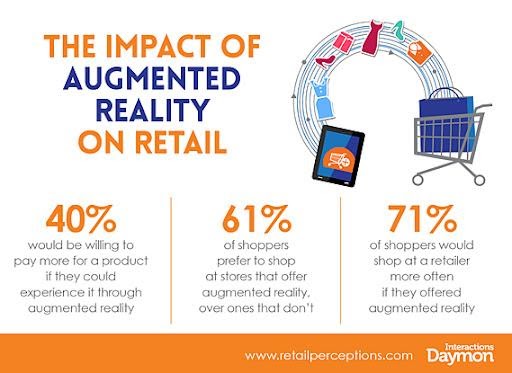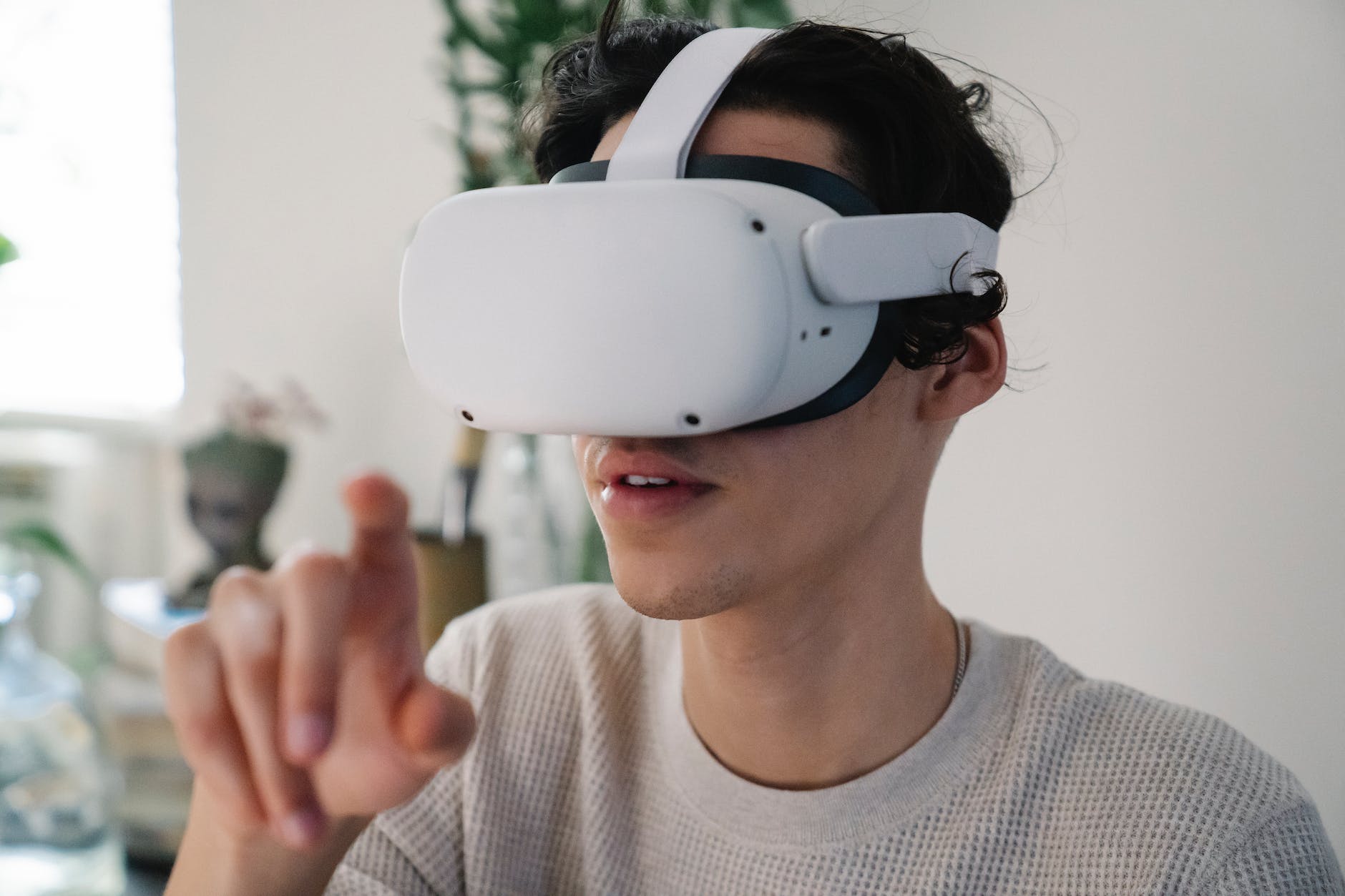The fashion industry has always been at the forefront of technological advancements, constantly seeking innovative ways to enhance the shopping experience for customers. In recent years, augmented reality (AR) has emerged as a game-changer in the world of e-commerce. By allowing customers to virtually try on clothing and accessories from the comfort of their own homes, AR try-ons have revolutionized the way people shop online. This blog post explores the potential and benefits of AR try-ons, their impact on fashion brands and e-commerce platforms, and their role in reshaping the online retail industry.
Exploring the Potential of Augmented Reality Try-Ons
AR try-ons utilize advanced technology to superimpose virtual garments onto a customer’s real-time image or video. This allows customers to see how clothing items fit, drape, and move on their own bodies, providing a more accurate representation than static product images. By overcoming the limitations of traditional online shopping, such as the inability to physically try on items, AR try-ons offer a more interactive and immersive experience, enhancing customer satisfaction and reducing the number of returns.
Additionally, AR try-ons enable personalization and increased customer engagement. Through interactive features like adjusting sizing, selecting color options, or exploring different styling options, customers can truly tailor their shopping experience to their preferences. This level of customization fosters a sense of ownership and connection with the products, increasing the likelihood of a purchase.
Advantages for Fashion Brands and E-Commerce Platforms
Fashion brands and e-commerce platforms benefit greatly from incorporating AR try-ons into their online shopping experiences. Firstly, AR try-ons offer a cost-effective and sustainable solution for presenting products. Fashion brands no longer need to produce sample sizes in every available style, reducing material waste and lowering production costs. Instead, they can digitize their inventory and provide virtual try-ons for customers, greatly expanding their product range without the physical constraints.
Furthermore, AR try-ons provide valuable data collection and analysis opportunities. By analyzing customer interactions with virtual garments, brands can gain valuable insights into customer preferences, sizing trends, and buying patterns. This data can be leveraged to optimize product offerings, tailor marketing strategies, and improve overall customer satisfaction.
Finally, integrating AR try-ons with social media and influencer marketing can yield tremendous benefits. By collaborating with popular influencers or launching viral AR try-on campaigns, fashion brands can generate buzz and engagement among their target audience. This fresh approach to marketing not only grabs attention but also creates a seamless shopping experience where customers can instantly try on the items they see in social media feeds, making the entire process more convenient and interactive.
Reshaping the Online Fashion Retail Industry
Augmented reality try-ons have the potential to redefine how customers browse and shop for fashion online. Unlike traditional e-commerce, where customers often rely on images and descriptions to assess products, AR try-ons provide a more immersive and realistic experience. This, in turn, empowers customers to make more confident purchasing decisions by accurately visualizing how a particular garment will look and fit on their unique body shape and size.

Image courtesy of www.forbes.com via Google Images
AR try-ons also address size inclusivity and body positivity challenges prevalent in the fashion industry. By offering a virtual fitting room experience, customers of all sizes can see how garments will appear on their body type, promoting inclusivity and reducing the risk of purchasing ill-fitting clothing. This inclusive approach not only increases customer satisfaction but also fosters a more positive and accepting fashion culture.
Additionally, AR try-ons facilitate market reach and break geographical limitations. With the ability to virtually try on items from anywhere in the world, customers have access to a global marketplace, allowing them to explore niche or international brands that may not be readily available in their local area. This expansion of options benefits fashion brands by exposing them to a wider audience and increasing their potential for sales.
Implementing AR Try-Ons: Challenges and Considerations
While the benefits of AR try-ons are evident, implementing this technology does come with challenges. Firstly, it requires the necessary technological infrastructure to support the rendering and delivery of high-quality virtual garments. Brands and e-commerce platforms need to invest in robust systems and ensure smooth integration with their existing platforms to provide a seamless user experience.
Balancing accuracy and realism in virtual try-on experiences is crucial. The virtual garments must be accurately rendered and simulate real-world movement and fit to provide an authentic trying-on experience. Technology advancements such as incorporating AI and machine learning can help improve the accuracy and realism of AR try-ons over time.
Privacy and security concerns are also important factors to consider when implementing AR try-ons. Customers may be hesitant to share their personal information or images, raising concerns about data breach or misuse. It is essential for brands and platforms to prioritize data security and ensure customer trust through transparent data handling practices.
Lastly, bridging the gap between high-end and affordable fashion through AR try-ons is a significant consideration. While luxury brands have been quick to adopt this technology, there is a need for affordable and accessible fashion brands to embrace AR try-ons and make them widely available to a broader range of customers. This will further democratize the fashion retail industry and make the benefits of AR try-ons accessible to all.
Successful Examples and Case Studies
Numerous fashion brands and e-commerce platforms have already embraced AR try-ons and reaped the benefits. For example, Gucci launched an AR app that allows customers to virtually try on their Ace sneakers, resulting in increased engagement and sales. Similarly, online retailer ASOS implemented an AR feature on their mobile app, enabling customers to see how clothes appear on different body types. These early adopters have demonstrated that AR try-ons can lead to higher user engagement, increased conversion rates, and reduced returns.

Image courtesy of readwrite.com via Google Images
The success of these initiatives provides valuable lessons and best practices for other fashion brands and e-commerce platforms looking to incorporate AR try-ons into their online shopping experiences. These include ensuring a seamless integration with existing platforms, providing a wide range of virtual garment options, and continuously refining the accuracy and realism of the try-on experience through user feedback and technological improvements.
Future Innovations and Trends in AR Try-Ons
The future of AR try-ons in fashion e-commerce looks promising, with ongoing technological advancements and innovations. One trend is the integration of artificial intelligence (AI) and machine learning to improve the accuracy of body measurements and virtual garment fit. This will enhance the realism of try-ons and provide customers with even more confidence in their online purchases.
Another exciting trend is the incorporation of virtual stylists and personalized recommendations within the AR try-on experience. By leveraging customer data and preferences, AR try-ons can provide personalized styling suggestions, helping customers discover new looks and make informed purchase decisions.
Collaborations between AR try-ons and virtual reality (VR) are also on the horizon. By combining these immersive technologies, customers may have the opportunity to virtually explore entire fashion collections in immersive virtual environments, creating a truly unforgettable and interactive shopping experience.
In Conclusion
As we stand on the cusp of a new era in e-commerce, augmented reality (AR) try-ons are not just a novelty but a necessity, reshaping the online shopping landscape in profound ways. By bridging the gap between the digital and physical worlds, AR try-ons are revolutionizing the fashion industry, offering a personalized, immersive, and inclusive shopping experience. This innovation is not only enhancing customer satisfaction but also setting a new standard for online retail, where the virtual and real converge to create a seamless, interactive, and engaging experience.
As technology continues to evolve, the possibilities for AR try-ons and e-commerce are boundless. With advancements in AI, machine learning, and VR, the future of online shopping is poised to offer even more personalized, accurate, and immersive experiences. This digital transformation will continue to drive growth, inclusivity, and innovation in the fashion industry, making it more accessible and enjoyable for consumers worldwide.
In embracing these technologies, fashion brands and e-commerce platforms are not only enhancing their customer experience but also leading the charge towards a more dynamic, inclusive, and sustainable fashion future. The journey of AR try-ons is just beginning, and its potential to transform the e-commerce landscape is limitless. As we look forward to 2024 and beyond, the integration of AR try-ons into online shopping promises a vibrant, interactive, and personalized future for the fashion industry, making it an exciting time for consumers and retailers alike.



